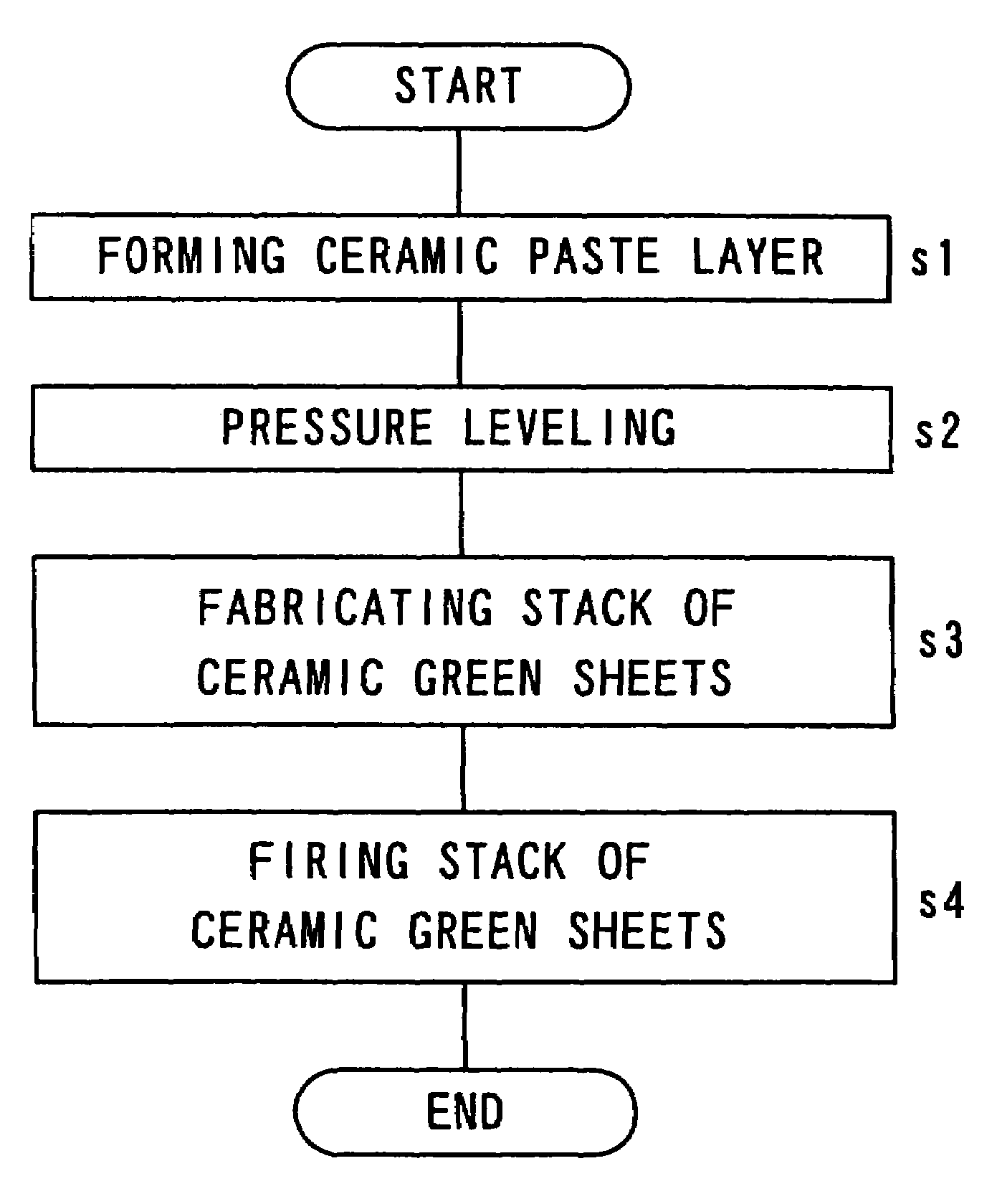Method of manufacturing ceramic paste and ceramic multi-layer wiring substrate utilizing the same
a multi-layer wiring and ceramic technology, applied in the direction of electrical equipment, conductive materials, solid-state devices, etc., can solve the problems of layer bonding failure or so-called delamination and warping deformation, internal wiring gap generation during formation of internal wiring, etc., to prevent internal wiring deformation, layer bonding, and sufficient fluidity
- Summary
- Abstract
- Description
- Claims
- Application Information
AI Technical Summary
Benefits of technology
Problems solved by technology
Method used
Image
Examples
example
[0079]Examples of the method of manufacturing a ceramic paste and a ceramic multi-layer wiring substrate according to the invention will now be described.
[0080][Measurement of Loss Factor tan δ]
[0081]A rheology measuring apparatus (Model MCR300 manufactured by Physica Messtechnik BmbH) was used for measurement of loss factor tan δ represented by (loss modulus) / (storage modulus) described in the present embodiment. A ceramic paste and a conductor paste to be an internal wiring were printed using a screen printing machine such that the ceramic paste and the conductor paste wound be in the form of sheets each having a thickness of 100 μm, and the ceramic paste and the conductor paste were dried for one hour at 80° C. using a hot-air drying oven. The dried sheet-like materials were set in a metal mold of a pressing machine and were pressed at a pressure of 4.9×106 Pa to fabricate samples for measurement in the form of disks having a thickness of 0.5 mm and a diameter of 20 mm.
[0082]A di...
examples 1 to 10
[0083]A binder, additives such as a plasticizer, and an organic solvent were added to a mixed powder of alumina type ceramics mainly composed of alumina to prepare slurry, and the slurry was molded using a doctor blade process and then dried to fabricate a green sheet of 50 mm horizontal×50 mm vertical×0.3 mm thick size.
[0084]Next, to 100 parts by weight of mixed powders of alumina type ceramics mainly composed by alumina, 5 parts by weight of a binder having percentages of composition as shown in Table 1 below, 20 parts by weight of a mixed solvent of terpineol and butyl carbitol acetate, and 20 parts by weight of a phthalate ester type plasticizer (a mixture of DOP and DBP) were added and agitated to be mixed. Thereafter, mixing was performed using a triple roll mill until aggregates of the ceramic powders and the binder were eliminated to prepare ceramic pastes.
[0085]To 100 parts by weight of a tungsten powder, 1.5 parts by weight of a binder composed of an acrylic resin and nitr...
PUM
| Property | Measurement | Unit |
|---|---|---|
| glass-transition temperature | aaaaa | aaaaa |
| glass-transition temperature | aaaaa | aaaaa |
| temperature | aaaaa | aaaaa |
Abstract
Description
Claims
Application Information
 Login to View More
Login to View More - R&D
- Intellectual Property
- Life Sciences
- Materials
- Tech Scout
- Unparalleled Data Quality
- Higher Quality Content
- 60% Fewer Hallucinations
Browse by: Latest US Patents, China's latest patents, Technical Efficacy Thesaurus, Application Domain, Technology Topic, Popular Technical Reports.
© 2025 PatSnap. All rights reserved.Legal|Privacy policy|Modern Slavery Act Transparency Statement|Sitemap|About US| Contact US: help@patsnap.com


